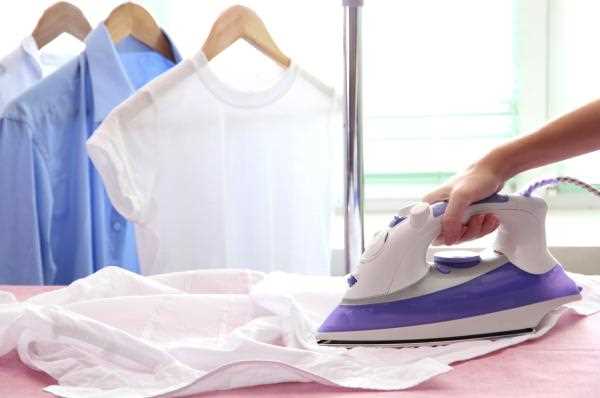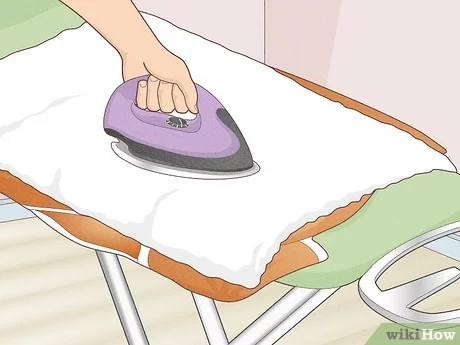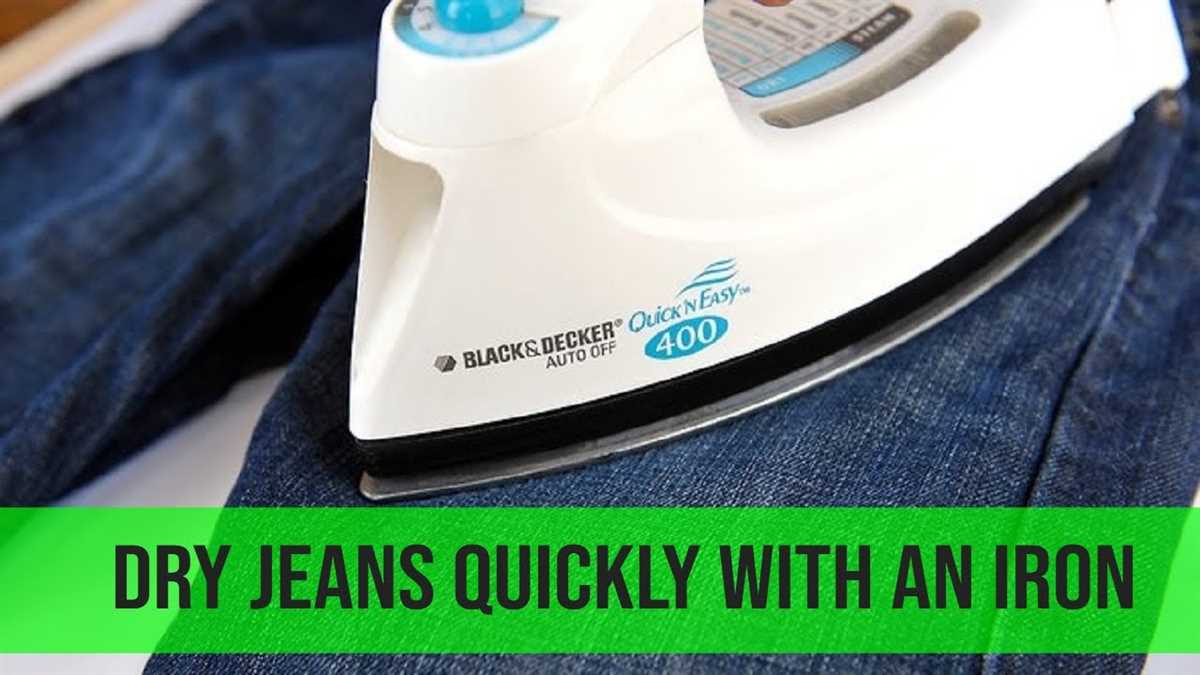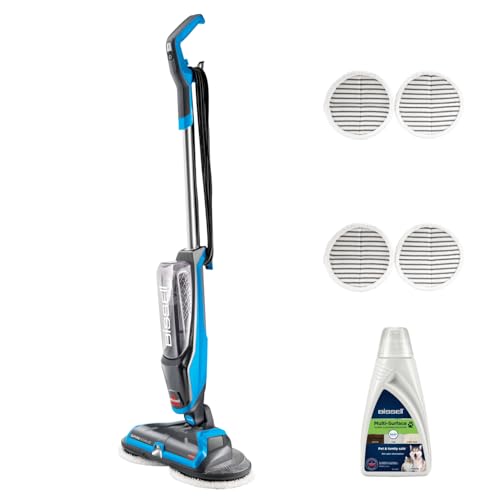




Have you ever found yourself in a situation where you need to dry your clothes quickly, but don’t have access to a dryer or the time to hang them out to air dry? Well, you might be surprised to learn that an iron can actually be used to dry your clothes in a pinch!
Now, before you go grabbing your iron and tossing your wet clothes onto the ironing board, it’s important to note that using an iron to dry clothes is not the same as using a dryer. An iron can help remove moisture from your clothes, but it won’t fully dry them like a dryer will. However, if you need to speed up the drying process or just remove some excess moisture, an iron can be a useful tool.
To dry your clothes with an iron, start by laying a clean towel on top of your ironing board. This will help protect both your clothes and the ironing board from any potential damage. Next, place your damp clothes onto the towel, making sure to smooth out any wrinkles or creases.
Tip: It’s important to use a clean towel to avoid any transfer of dirt or lint onto your clothes.
The Science behind Drying Clothes with an Iron
Drying clothes with an iron may seem like an unconventional method, but it can be effective in a pinch. Although it may not be as efficient as a dryer, understanding the science behind it can help you make the most of this technique.
Heat Transfer

The key to drying clothes with an iron lies in heat transfer. When the iron is set to a high temperature, it produces heat that can evaporate the moisture from wet clothes. This process is known as conduction, where heat is transferred from the hot iron to the damp fabric.
Evaporation
As the hot iron comes into contact with the wet clothes, the heat causes the water molecules in the fabric to vibrate. This increases their energy, allowing them to overcome the forces of attraction and escape from the fabric’s surface as water vapor. The steam produced then dissipates into the surrounding air.
Evaporation is a physical process that requires heat. By providing the necessary heat with an iron, you can accelerate the evaporation of water from the clothes, helping them dry faster.
Ironing Technique
When using an iron to dry clothes, it’s important to use the correct technique. Start by placing a clean cloth or towel between the iron and the clothes to protect delicate fabrics. Move the iron in a smooth, continuous motion over the damp areas of the clothes, focusing on one section at a time.
Applying pressure can help to speed up the drying process. The pressure helps to squeeze out the moisture from the fabric, allowing it to evaporate more easily. However, be careful not to use too much pressure, as it can damage the clothes.
Limitations
While drying clothes with an iron can be effective, there are some limitations to keep in mind. This method is most suitable for small areas or individual items. It may not be practical for large loads of laundry or heavy fabrics.
Additionally, the drying time with an iron is generally longer compared to a dryer. It’s important to have patience and allow enough time for the clothes to dry thoroughly.
| Pros | Cons |
|---|---|
| Can be done without a dryer | Time-consuming |
| Effective for small areas or individual items | Not suitable for large loads |
| Uses heat transfer and evaporation | May not be gentle on delicate fabrics |
Overall, drying clothes with an iron is a viable option when other drying methods are not available. By understanding the science behind it, you can use this technique effectively to dry your clothes in a pinch.
Understand the Heat Transfer Process
Understanding the heat transfer process is essential when it comes to using an iron to dry clothes. It involves the transfer of heat energy from one object to another through direct contact, conduction, or radiation.
1. Conduction
When you iron your clothes, heat is transferred through conduction. Conduction occurs when the particles in a substance collide with each other, transferring heat energy. In this case, the iron plate gets heated, and when it comes into contact with wet clothes, the heat is transferred to them.
2. Radiation
Radiation is another mode of heat transfer that plays a role in drying clothes with an iron. Radiation is the emission of electromagnetic waves, including heat energy. In this case, the heating element inside the iron emits infrared radiation, which directly heats up the wet clothes, causing them to dry.
3. Evaporation

Evaporation is the process by which a liquid changes into a gas. When you iron wet clothes, the heat provided by the iron causes the water molecules in the fabric to gain enough energy to break free from the liquid state and become a gas. This process helps in drying the clothes faster.
Overall, the heat transfer process involving conduction, radiation, and evaporation is responsible for drying clothes with an iron. Understanding these principles can help you make the most of your iron and effectively dry your clothes.
- Conduction occurs when heat is transferred through direct contact between objects.
- Radiation involves the emission of electromagnetic waves, including heat energy.
- Evaporation is the process by which water molecules change from a liquid to a gas.
Using an Iron to Drying Clothes: Pros and Cons
Pros:
-
Quick and convenient: Using an iron to dry clothes is a fast and convenient method. You don’t have to wait for the clothes to air dry or use a dryer, which can take a long time.
-
Efficient for small loads: This method is most effective for drying small loads of clothes, especially when you only need to dry a few items in a hurry.
-
Wrinkle-free clothes: When you use an iron to dry clothes, you can simultaneously remove wrinkles and dry the fabric, resulting in wrinkle-free clothes without the need for additional ironing.
-
Controlled heat settings: Irons usually have adjustable heat settings, allowing you to control the temperature and prevent damage to delicate fabrics.
Cons:
-
Potential for damage: Using an iron to dry clothes can potentially damage the fabric, especially if the heat setting is too high or if the iron is left in one spot for too long.
-
Not suitable for all fabrics: Some fabrics are not suitable for ironing or may require special care. Using an iron to dry such fabrics can cause shrinkage or other damage.
Must-HaveSundu Portable Clothes SteamerRapid 15-second heat-up for convenienceEffortlessly smooth wrinkles with the Sundu handheld steamer's powerful steam and versatile ironing options, ideal for home and travel. -
Less effective for large loads: While an iron can be efficient for small loads, it may not be practical or effective for drying large loads of clothes.
-
Time-consuming: Although using an iron is quick for small loads, it can be time-consuming if you have a lot of clothes to dry. It may not be the most efficient method for drying multiple items.
Overall, using an iron to dry clothes can be a convenient and quick method, especially for small loads. However, it is important to be cautious with the heat settings and consider the fabric type to avoid potential damage. It may not be suitable for all fabrics or large loads, and it can be time-consuming for drying multiple items.
Step-by-Step Guide to Drying Clothes with an Iron
Drying clothes with an iron can be a quick and convenient way to remove moisture from garments when you don’t have access to a dryer or drying rack. Follow these step-by-step instructions to effectively dry your clothes using an iron.
1. Prepare your ironing board
Start by setting up your ironing board in a safe and flat area of your home. Make sure the ironing board is clean and free from any obstructions that could damage your clothes.
2. Adjust the iron settings
Check the fabric care label on your clothes to determine the appropriate temperature setting for ironing. Set your iron to the recommended temperature for the fabric you are drying. It’s always better to start with a lower temperature and increase it if necessary to avoid damaging your clothes.
3. Lay a clean towel on the ironing board
To protect your clothes from direct heat and potential damage, place a clean towel on the ironing board as a barrier between the iron and your garments. This will also help to absorb excess moisture as you dry your clothes.
4. Arrange the damp clothes on the towel
Place the damp clothes on top of the clean towel, arranging them in a single layer to ensure thorough and even drying. Smooth out any wrinkles or folds in the fabric to aid in the drying process.
5. Press the iron on the clothes
Starting with one garment at a time, press the heated iron onto the damp fabric. Apply light pressure and move the iron in gentle, circular motions. Avoid keeping the iron in one spot for too long to prevent scorching or burning the fabric.
6. Flip and repeat

Once one side of the garment is dry, flip it over and repeat the ironing process on the other side. This will ensure that both sides of the fabric are evenly dried.
7. Check for dryness

Periodically check the clothes for dryness while ironing. Certain fabrics may require less time to dry, so it’s essential to keep an eye on the progress to avoid over-drying. If needed, adjust the iron temperature to a lower setting for delicate fabrics.
8. Hang or fold the dried clothes
Once each garment is dry, carefully remove it from the ironing board and hang or fold it immediately to prevent wrinkling. Allow the clothes to cool down before wearing or storing them.
Remember, drying clothes with an iron is not as effective as using a dryer or drying rack, and it may not be suitable for all types of fabrics. It’s always best to follow the manufacturer’s instructions and consider alternative drying methods when possible.
Tips for Efficient Clothes Drying with an Iron
Drying clothes with an iron can be a quick and efficient alternative when you don’t have access to a dryer. Here are some tips to help you get the best results:
- Prepare the ironing board: Set up your ironing board in a well-ventilated area and make sure it is clean and free from any dirt or debris.
- Choose the right iron: Use a steam iron if possible, as it can help to remove wrinkles more effectively.
- Use a clean cloth: Place a clean, thin cloth on top of the garment you want to dry. This will protect the fabric from direct contact with the iron and prevent potential damage.
- Adjust the temperature: Set the iron to a low or medium heat setting, depending on the fabric. Avoid using high temperatures, as they can cause the fabric to burn or become discoloured.
- Moisten the cloth: Before ironing, moisten the cloth slightly with water. This will create steam when the iron comes into contact with the cloth, helping to release wrinkles.
- Iron the garment: Gently iron the garment, moving the iron in smooth, even strokes. Start from the top and work your way down, focusing on the areas with the most wrinkles.
- Hang the garment: Once you have finished ironing, immediately hang the garment on a hanger or clothesline. This will allow it to air dry and help to remove any remaining moisture.
- Check for moisture: Before wearing or storing the garment, make sure it is completely dry. Check for any signs of moisture or dampness, as this can lead to the growth of mould or mildew.
Remember, drying clothes with an iron should be done with caution and only used as a temporary solution. It’s always best to air dry or use a dryer when possible to maintain the quality and longevity of your clothes.
FAQ
Can I use an iron to dry my clothes?
No, an iron is not designed to dry clothes. Its primary function is to remove wrinkles by applying heat and pressure.
Why can’t I dry my clothes with an iron?
An iron is not suitable for drying clothes because it does not generate enough airflow to remove moisture effectively. It is designed for a specific purpose, which is ironing clothes, not drying them.
What is the best way to dry clothes?
The best way to dry clothes is by using a clothes dryer or hanging them outdoors on a clothesline. These methods allow for proper airflow and evaporation of moisture, resulting in faster and more effective drying.
Are there any risks in trying to dry clothes with an iron?
Yes, there are risks involved in trying to dry clothes with an iron. Exposing wet clothes to direct heat for an extended period can damage the fabric and potentially lead to scorching or burning. It is best to use appropriate methods like a clothes dryer or air-drying to avoid any potential risks.













